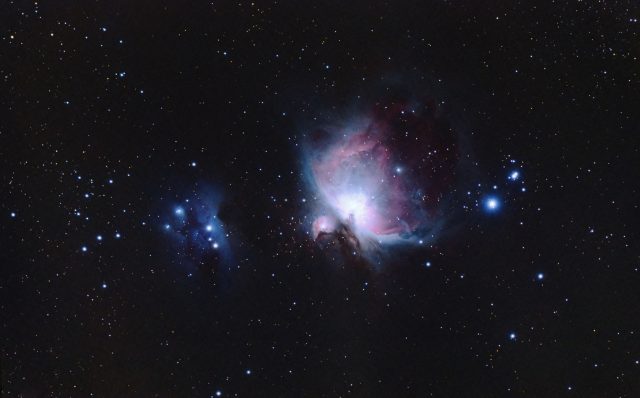
An additional 45 sub-images were added to the previous version of this image, which was 11×60 sec @ ISO 200. So, this is 101 minutes of exposure integration.
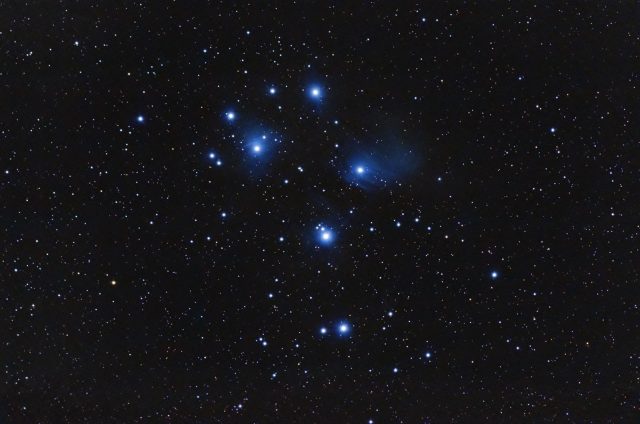
It is surprising that you could get the Merope nebulousity in the Pleiades to show up under severe light pollution (LP) with just 10 minutes of exposure. It was definitely transparent this night, so that helped. Processing was no fun, however. Nasty red LP took its toll.
Update Feb 5, 2017:
I did a guiding test on Feb 3rd and used M45 as my target. I shot lots of sub-images with 15 and 30 second exposures. I took the best 74 and combined those with the above data is this is what I got:
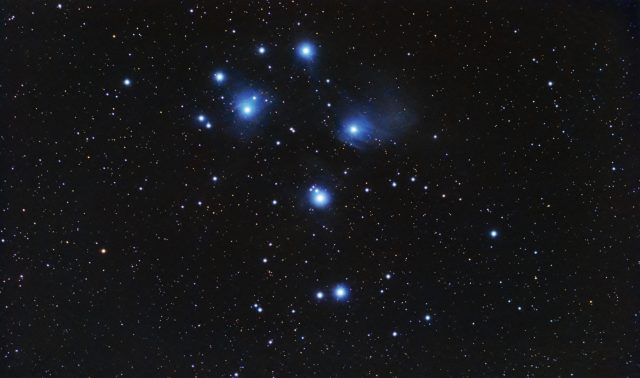
It certainly smoothed out that muddy-looking background LP remnant splotchy-ness appearance. Not too bad for shooting from a location next to shopping center parking lots. lol
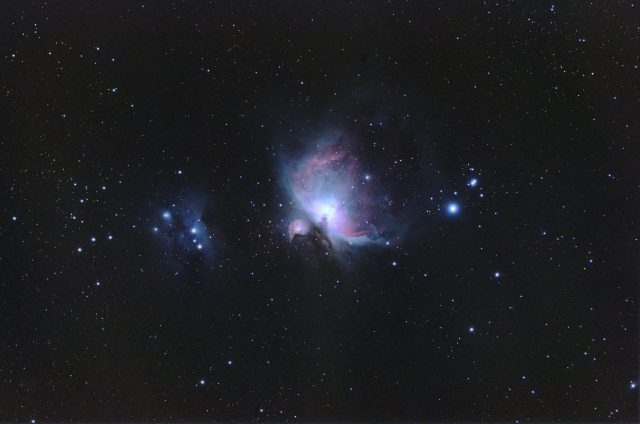
I was doing a shakedown of new equipment and decided to post the results of my test shot of the Orion Nebula. The 11 sub-images were taken from a red zone on the LP map, probably a Bortle 7 to 8 sky with only the brightest stars visible.
I was trying out a freshly configured Windows 10 laptop, a new guiding camera and a new guide scope. Yep, I broke down and bought the new Orion Ultra-Mini guide scope, since it matched with my relatively new Aptina AR0130 color planetary/guider cam. I also used a new Shoestring Bluetooth wireless interface for the mount, which although it worked well enough towards the end, the first part of the session was not without issues.
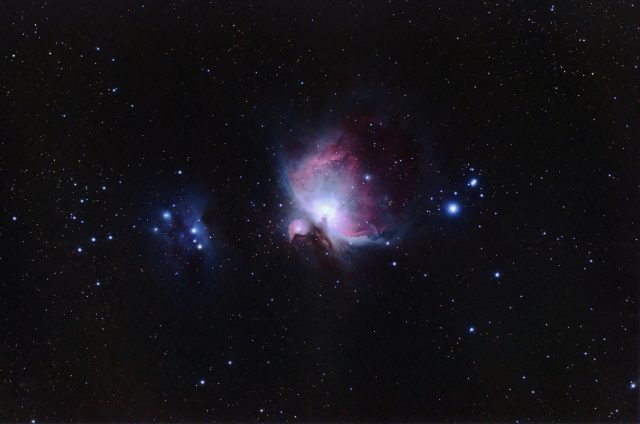
This session was also the first one where everything actually worked since I replaced the two stepper motors in my Atlas mount. The last time I tried it I couldn’t get the little netbook I was using to stay connected to the mount. A different laptop with a more robust USB bus did the trick.
There are still kinks to work out with the new guiding camera arrangement and the newest version PHD2 Guiding. The last time I used PHD Guiding, it was Craig Stark’s original version. This is the first time I’ve used the new Open Source version. It will take time, but I’m sure the setup is capable of getting the job done. I got rid of the Meade SN-6 scope I was using as a guide scope and that reduced the weight and bulk of the imaging rig. A lighter payload should let me get better tracking once I have all the settings tuned, hopefully.
I’ve gotten behind in the last couple of years and now I can finally catch back up to all the new technology and software that is now available. Soon, I hope to transport my revamped imaging rig to a dark sky sight and churn out some new keeper comet and deep sky images before summer arrives. Wish me luck. 🙂
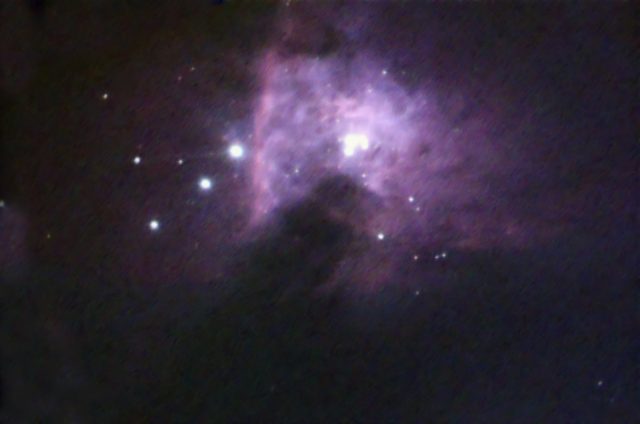
Here’s one for the personal record book – shooting the Orion Nebula with a scope that has no tracking whatsoever. It was on a Dobsonian mount.
I used an eyepiece camera in video mode and just let M42 drift through the field while I tried to get the most video frames possible. I think I got between 35 and 70 frames for each video. Out of 8 or 9 videos taken, two of the AVI files were good enough to try stacking select frames for a better image.
I used 16 frames from one video and 16 from another video. Each set was stacked in IRIS with the planetary work process for AVI videos, then the two images were combined in PS.
The results are poor compared to what is possible with a tracking mount. But, I knew it could be done with the right technique and I just had to try. 🙂
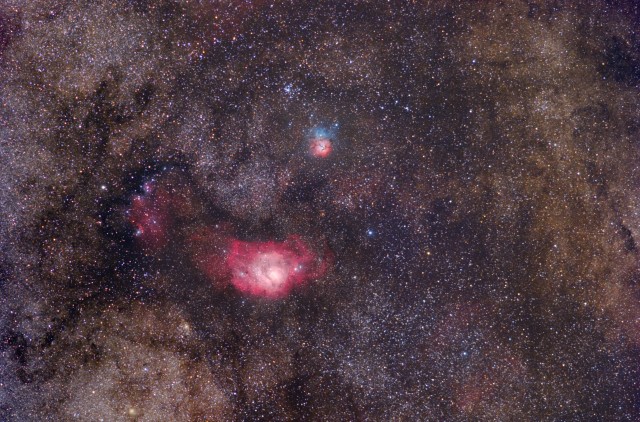
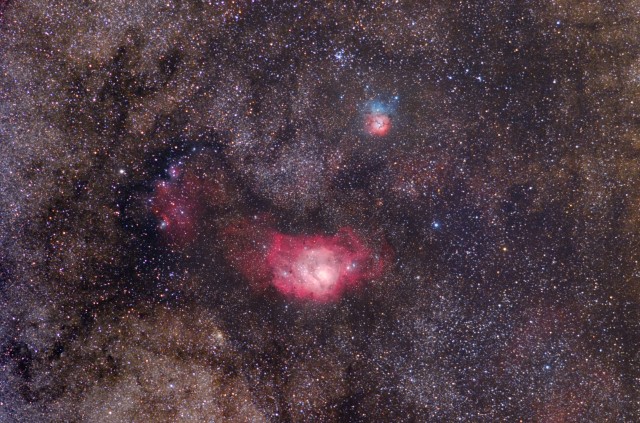
Here’s a rework of an image with data from higher resolution images overlayed on a base image that was taken with my 200mm F/2.8 Canon telephoto lens. The overlay images were closeups of M8 and M20 taken with the TV-85 telescope.
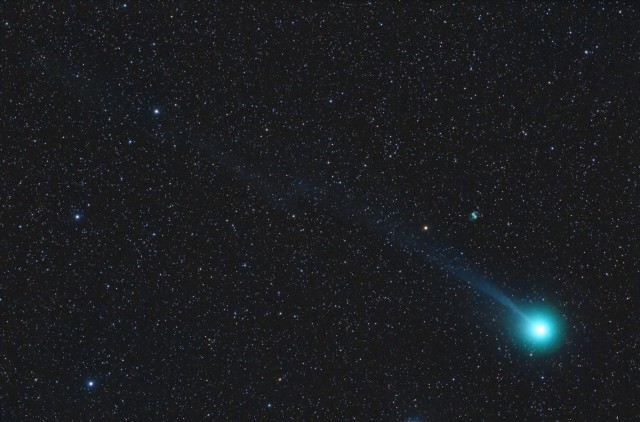
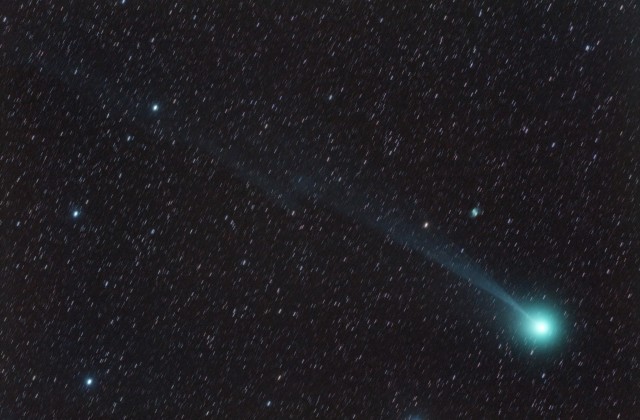
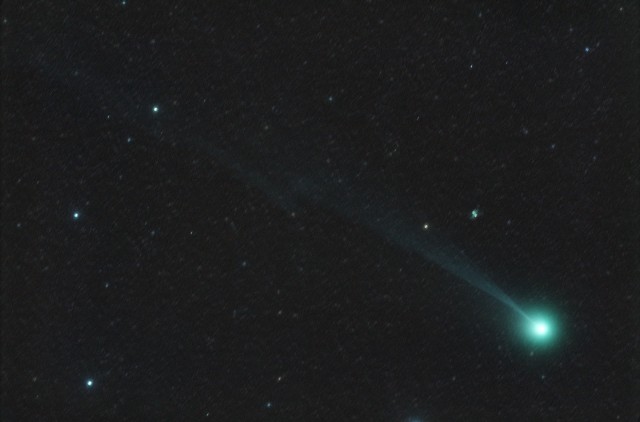
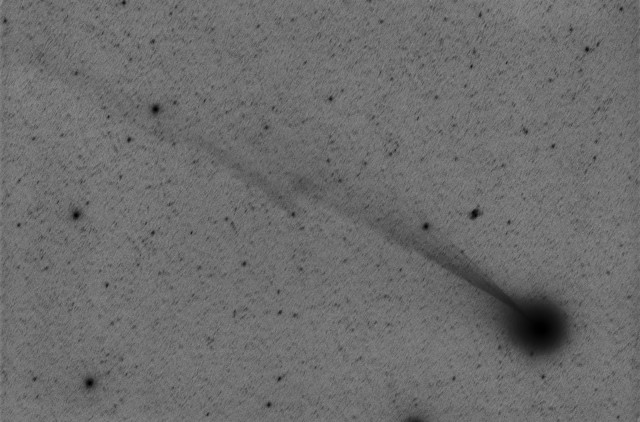
A closer pairing of Comet Lovejoy and the Little Dumbbell Nebula on the night of Feb 20, 2015, plus another tail disruption event was in progress.
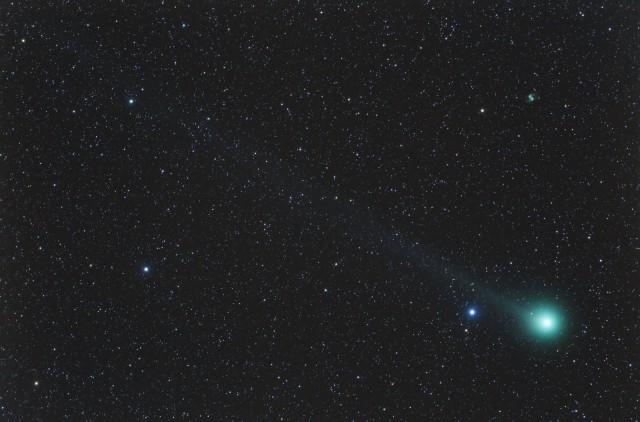
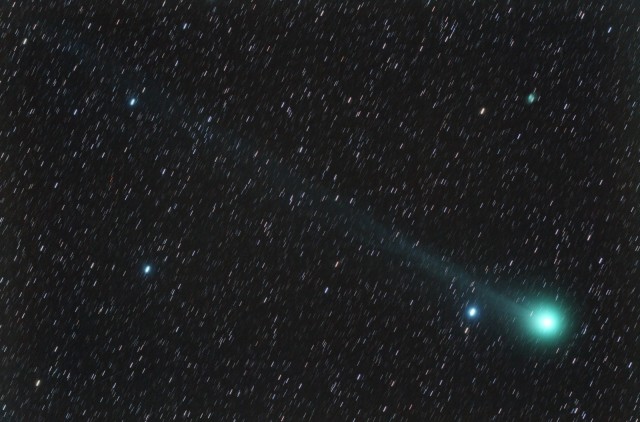
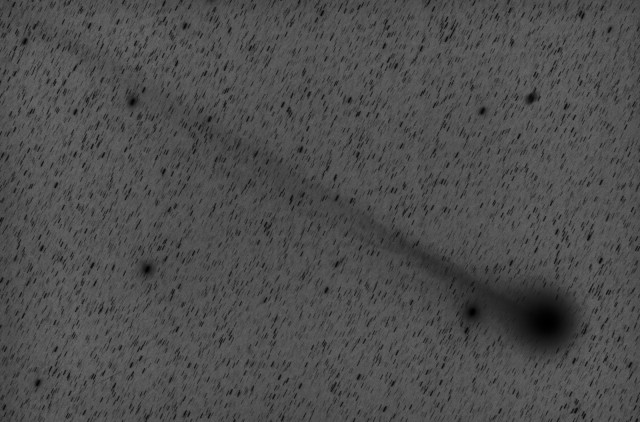
The last significant encounter with another Messier object for Comet Lovejoy Q2 before it dims down more and moonlight eventually spoils the view. The best part of the apparition is about over. From now on, the comet will get fainter as it recedes from Earth and heads back out into deep space.
Its has been a fun time imaging this bright comet over the last two months. I had good public exposure with 2 news organizations publishing two of my images, one of them being NBCNews.com. Hopefully, another bright comet will soon appear and put on another show for us. I’m keeping my fingers crossed. 🙂